Introduction to High-Speed Elevators
What Defines a High-Speed Elevator?
High-speed elevators are marvels of modern engineering, designed to travel at speeds exceeding 600 meters per minute (36 km/h). These elevators serve high-rise buildings, allowing rapid vertical transportation that is crucial for efficiency in densely populated urban areas.
The Need for Speed in Urban Development
As cities grow vertically, the demand for faster and more efficient transportation within buildings has skyrocketed. High-speed elevators not only save time but also enhance the overall experience of living and working in skyscrapers. They represent the cutting edge of urban mobility solutions, addressing the challenges of modern urbanization.
The Evolution of Elevator Technology
Early Innovations and Milestones
The journey of elevator technology began in the 19th century with the invention of the safety elevator by Elisha Otis. This invention made it possible to construct taller buildings, as it addressed the fear of falling—a major concern at the time.
Modern Engineering Marvels
Today’s high-speed elevators incorporate advanced materials, computer-aided design, and cutting-edge technologies. Innovations like double-decker elevators, magnetic levitation, and smart controls have transformed elevators from mere conveyance devices to integral components of smart buildings.
Top 10 Fastest Elevator in the World
#10 John Hancock Center
- Location: Chicago, U.S.A
- Top Speed: 545 meters per minute (33 km/h)
- Height: 344 meters
- Time to Top: 38 seconds
- Capacity: 14 persons
- Number of Elevators: 37 in the building, 2 for the Observatory
#9 China World Trade Center
- Location: Beijing, China
- Top Speed: 600 meters per minute (36 km/h)
- Height: 335 meters
- Time to Top: 35 seconds
- Number of Elevators: 41
#8 World Financial Center
- Location: Shanghai, China
- Top Speed: 600 meters per minute (36 km/h)
- Height: 492 meters
- Time to Top: 50 seconds
- Number of Elevators: 91
#7 Tokyo Skytree
- Location: Tokyo, Japan
- Top Speed: 600 meters per minute (36 km/h)
- Height: 634 meters
- Time to Top: 50 seconds
- Number of Elevators: 4 high-speed, large capacity (40 persons)
#6 Burj Khalifa
- Location: Dubai, United Arab Emirates
- Top Speed: 600 meters per minute (36 km/h)
- Height: 828 meters
- Time to Top: 82 seconds
- Number of Elevators: 57
#5 One World Trade Center
- Location: New York, U.S.A
- Top Speed: 615 meters per minute (37 km/h)
- Height: 541 meters
- Time to Top: 47 seconds
#4 Yokohama Landmark Tower
- Location: Yokohama, Japan
- Top Speed: 750 meters per minute (45 km/h)
- Height: 296 meters
- Time to Top: 36 seconds
- Number of Elevators: 79 high-speed
#3 Taipei 101
- Location: Taipei, Taiwan
- Top Speed: 1010 meters per minute (61 km/h)
- Height: 509 meters
- Time to Top: 33 seconds
- World Record: Held from 2004 to 2015
#2 Shanghai Tower
- Location: Shanghai, China
- Top Speed: 1080 meters per minute (65 km/h)
- Height: 632 meters
- Time to Top: 55 seconds
- Number of Elevators: 106
- World Record: Held from 2015 to 2016
#1 CTF Finance Center
- Location: Guangzhou, China
- Top Speed: 1200 meters per minute (72 km/h)
- Height: 530 meters
- Time to Top: 43 seconds
- Number of Elevators: 95
- Remark: 32 times faster than a conventional elevator
How Fast Is The Fastest Elevator In The World?
Speed Metrics and Comparisons
The fastest elevator in the world, located in the CTF Finance Center in Guangzhou, China, travels at an astounding speed of 1200 meters per minute (72 km/h). This speed is comparable to that of a high-speed train, illustrating the remarkable advancements in elevator technology.
Technological Innovations Driving Speed
Several key innovations contribute to the incredible speed of modern elevators:
- Advanced Traction Systems: Utilizing state-of-the-art traction systems, these elevators achieve higher speeds while maintaining smooth operation.
- Aerodynamics: Streamlined cab designs reduce air resistance, allowing for faster travel with less energy consumption.
- Enhanced Safety Mechanisms: High-speed elevators are equipped with sophisticated braking systems, emergency power supplies, and real-time monitoring to ensure passenger safety even at top speeds.
The Engineering Behind Speed
Advanced Traction Systems
High-speed elevators rely on advanced traction systems that use powerful motors and lightweight, strong materials to achieve their impressive speeds. These systems often incorporate computerized controls to optimize performance and energy efficiency. The result is a smoother, faster ride with less wear and tear on the elevator components.
Aerodynamics and Structural Design
Elevator cabs designed for high-speed travel must be aerodynamically optimized to minimize air resistance. This involves streamlined shapes and smooth surfaces that allow the elevator to cut through the air with minimal drag. Additionally, the structural design of the elevator shaft, including the use of advanced guide rails and counterweights, ensures stability and safety even at high speeds.
Safety Measures in High-Speed Elevators
Safety is a paramount concern in the design and operation of high-speed elevators. Key safety features include:
- Emergency Brakes: These are designed to bring the elevator to a halt in the event of a malfunction.
- Real-Time Monitoring Systems: Sensors and control systems continuously monitor the elevator’s performance, detecting any anomalies and triggering corrective actions if needed.
- Vibration Dampers: These reduce the impact of vibrations caused by high-speed travel, ensuring a smoother ride.
- Regular Maintenance Protocols: High-speed elevators require frequent and rigorous maintenance checks to ensure all systems are functioning correctly and safely.
The Impact of High-Speed Elevators on Urbanization
Enhancing Skyscraper Accessibility
High-speed elevators are crucial in making skyscrapers more accessible and functional. They allow people to travel quickly between floors, making tall buildings more practical for residential, commercial, and mixed-use purposes. This accessibility helps to maximize the usable space within skyscrapers, supporting higher population densities and more efficient land use in urban areas.
Economic and Environmental Benefits
The efficiency of high-speed elevators translates into significant economic benefits. Reduced waiting times and faster travel between floors can enhance productivity in office buildings and improve the quality of life for residents in high-rise apartments. Environmentally, these elevators are often designed to be energy-efficient, incorporating regenerative braking systems that convert kinetic energy back into electrical energy, reducing overall power consumption.
Future Trends in Elevator Technology
Predictions and Upcoming Innovations
The future of elevator technology is poised to bring even more exciting advancements. Key trends include:
- Magnetic Levitation (Maglev): Elevators using maglev technology, similar to that used in high-speed trains, promise smoother and faster rides by eliminating friction between the elevator cab and the shaft.
- Multi-Directional Elevators: Innovations like the MULTI system by ThyssenKrupp allow elevators to move horizontally and vertically, enabling more flexible building designs and efficient use of space.
- Sustainable Technologies: Future elevators will increasingly incorporate eco-friendly materials and energy-saving technologies, aligning with broader sustainability goals.
The Role of AI and IoT in Elevators
Artificial Intelligence (AI) and the Internet of Things (IoT) are transforming elevator operations. AI-powered systems can predict maintenance needs, optimize traffic flow by learning usage patterns, and enhance passenger comfort through personalized settings. IoT-enabled sensors provide real-time data on elevator performance, enabling proactive maintenance and reducing downtime.
Case Studies of Iconic Elevators
Shanghai Tower
The Shanghai Tower’s elevator, which reaches speeds of 1080 meters per minute (65 km/h), exemplifies the pinnacle of elevator technology. It uses state-of-the-art traction systems and aerodynamic cab design to achieve this speed while ensuring a smooth and safe ride. The elevator provides breathtaking views of Shanghai, enhancing the overall visitor experience.
Burj Khalifa
The Burj Khalifa’s elevators, traveling at 600 meters per minute (36 km/h), are integral to the functionality of the world’s tallest building. These elevators feature double-decker cabs and advanced control systems to handle the high passenger volume efficiently. The ride offers stunning views of Dubai, making it a memorable experience for visitors and residents alike.
CTF Finance Center
Holding the record for the fastest elevator, the CTF Finance Center’s elevator travels at 1200 meters per minute (72 km/h). This elevator uses advanced traction technology and robust safety systems to ensure a reliable and exhilarating ride. The elevator’s design reflects the building’s modern and innovative spirit, contributing to Guangzhou’s reputation as a hub of technological advancement.
The User Experience
Comfort and Safety Features
Modern high-speed elevators prioritize passenger comfort and safety. Noise reduction technologies, smooth acceleration and deceleration, and air conditioning create a pleasant riding environment. Additionally, features like ambient lighting, spacious cabins, and informative displays help to reduce the psychological impact of high-speed travel, making the experience less intimidating and more enjoyable.
Psychological Impact of High-Speed Travel
While traveling at high speeds can be thrilling, it can also cause anxiety for some passengers. To address this, elevator designers incorporate elements that enhance comfort and reduce stress, such as:
- Smooth Ride Quality: Minimizing vibrations and jolts during the ride.
- Visual and Audio Cues: Providing passengers with information about their journey, such as floor levels and expected travel time.
- Spacious Interiors: Offering a sense of openness to counteract feelings of confinement.
Frequently Asked Questions (FAQs)
What is the fastest elevator in the world?
The fastest elevator in the world is located in the CTF Finance Center in Guangzhou, China, traveling at a speed of 1200 meters per minute (72 km/h).
How do high-speed elevators impact building design?
High-speed elevators enable the construction of taller buildings by providing efficient vertical transportation. This optimization allows for more usable space and supports innovative architectural designs.
What safety features are in place for high-speed elevators?
High-speed elevators include emergency brakes, real-time monitoring systems, vibration dampers, and rigorous maintenance protocols to ensure passenger safety.
Are there any health concerns associated with using fast elevators?
While generally safe, high-speed elevators can cause mild discomfort due to rapid changes in pressure and acceleration. These effects are typically minimal and short-lived.
How is elevator speed regulated and maintained?
Elevator speed is regulated through advanced control systems that monitor and adjust the elevator’s performance in real-time. Regular maintenance and rigorous testing ensure that high-speed elevators operate safely and efficiently.
End Note:
Exploring the world’s fastest elevators unveils a blend of cutting-edge technology, innovative engineering, and the relentless pursuit of efficiency. These marvels of modern construction not only transform our urban landscapes but also redefine the possibilities of vertical transportation. As we look to the future, the continued evolution of elevator technology promises even greater advancements, making the sky truly the limit.
Also Read:
TOP 15 ELEVATOR COMPANIES IN PAKISTAN

